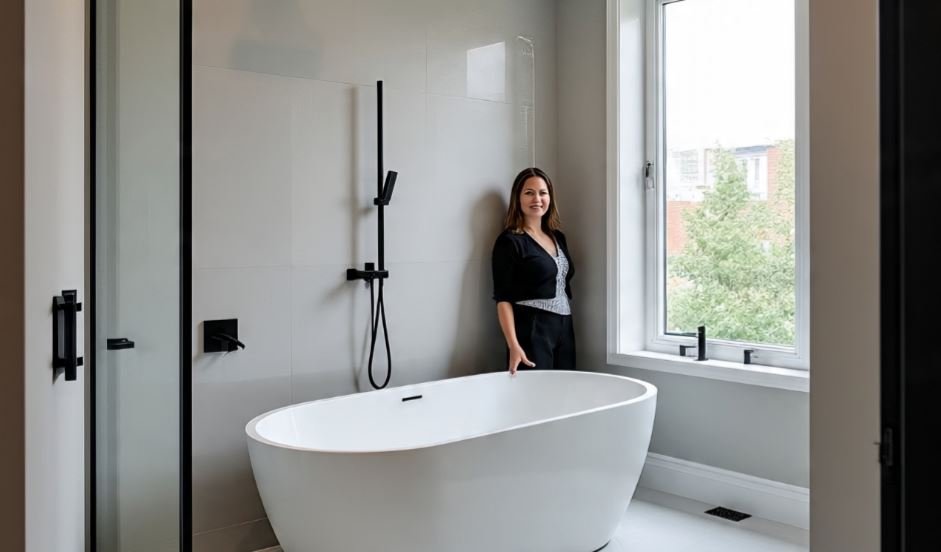Bathrooms have come a long way from merely functional spaces to becoming expressions of style, wellness, and innovation. In today’s design landscape, the bathroom is no longer a tucked-away necessity—it’s a centerpiece of relaxation and sophistication. Homeowners and designers alike are embracing sleek lines, inclusive layouts, and smart technology, all while ensuring spaces remain both practical and beautiful. Among the most noteworthy trends in modern bath renovation are wet rooms and zero-threshold showers, both revolutionizing how we experience comfort and accessibility within the home.
The Rise of the Wet Room
The concept of the wet room has gained immense popularity for its streamlined design and exceptional functionality. Unlike traditional bathrooms where fixtures are compartmentalized and the shower is contained, a wet room is an open space where the shower area blends seamlessly with the rest of the room. The entire floor is waterproofed, and there’s typically a gentle gradient that directs water toward a central drain.
A wet room epitomizes minimalism and visual continuity. With fewer partitions, sightlines remain unobstructed, giving the illusion of a larger and airier space. This is especially beneficial in smaller homes or city apartments where every square foot counts. Additionally, cleaning becomes remarkably easier since fewer joints and enclosures mean fewer nooks for grime and mildew.

Beyond aesthetics and maintenance, wet rooms are ideal for those prioritizing accessibility. Because there are no steps or ledges, individuals with mobility challenges can navigate the space comfortably. For aging homeowners choosing to remain in their residences long term, a wet room offers a future-proofed solution that eliminates common bathroom hazards.
Zero-Threshold Showers: Sleek, Safe, and Sophisticated
Zero-threshold showers share a kinship with wet rooms but bring their own flair and engineering challenges. These showers, also known as curbless showers, remove the traditional raised lip or step that separates the shower enclosure from the rest of the bathroom. Instead, the shower floor slopes subtly toward the drain, ensuring proper water containment and flow.
From a design standpoint, zero-threshold showers offer clean lines and a unified look that pairs well with contemporary and modern décor. Their streamlined appearance contributes to a sense of openness, which can be particularly impactful in master baths or en suite settings. Like wet rooms, they enhance accessibility by allowing wheelchair users and those with mobility impairments to enter the shower effortlessly.
Installing a zero-threshold shower demands precision. Bathroom renovation experts must carefully plan the slope, drainage system, and waterproofing methods to prevent leakage or pooling. Often, renovations of this kind involve adjusting floor joists or using specialized membranes, but the payoff is immense. With improved safety, elegance, and practicality, zero-threshold showers are redefining what luxury in the bathroom truly means.
Smart Technology Integration
Alongside structural innovations, technology is carving out its place in modern bath renovations. Smart showers that allow users to control temperature, water pressure, and spray settings via voice command or smartphone app are becoming commonplace. Mirror displays that provide weather updates, news feeds, and ambient lighting are now part of high-end renovations, bridging the gap between convenience and indulgence.
Even toilets are experiencing a renaissance. Models equipped with self-cleaning features, heated seats, bidet functions, and motion-activated lids are turning bathrooms into futuristic sanctuaries. Floor heating systems that warm tiles underfoot add another layer of comfort, especially during colder months.
The integration of these technologies does not merely serve as a novelty—it reflects a growing desire for personalization and responsive environments. Homeowners want their bathrooms to adapt to their routines and moods, and smart features allow them to curate experiences that are both intuitive and luxurious.
Materials That Merge Form and Function
The choice of materials in contemporary bathrooms supports both style and resilience. Porcelain continues to dominate the space due to its versatility, water resistance, and design range. Innovations in tile manufacturing have led to surfaces that mimic natural stone, wood, and even textiles, offering warmth without compromising durability.
Quartz countertops and backsplashes provide a nonporous alternative to marble, combining beauty with practicality. Their resistance to staining and scratching makes them ideal for busy households. Matte finishes and muted tones are gaining traction, favoring soft sophistication over the stark gleam of older designs.
Designers are also leaning into sustainability. Recycled glass tiles, low-flow fixtures, and LED lighting solutions not only contribute to environmental responsibility but also enhance energy efficiency and reduce utility costs. In this way, material choices are reinforcing the ethos of modern renovations—thoughtful, stylish, and sustainable.
Lighting Design and Spatial Psychology
Lighting plays a crucial role in shaping mood and enhancing usability. Modern bath renovations incorporate layered lighting strategies that include recessed overhead lights, backlit mirrors, and integrated shower illumination. The goal is to create an adaptable atmosphere, one that supports both energizing morning routines and relaxing nighttime rituals.
Designers now understand that lighting doesn’t just illuminate—it influences psychology. Cooler tones may foster alertness, while warmer glows can promote calm. Strategically placed fixtures also highlight architectural elements, making textures pop and spaces feel more expansive. Dimmer controls and motion sensors further personalize the experience, adding a subtle touch of magic to everyday rituals.
Crafting Timeless Modernity
What sets modern bathroom renovation techniques apart is their ability to harmonize style, comfort, and accessibility. From the expansive appeal of wet rooms to the elegance of zero-threshold showers, today’s innovations prioritize the user experience as much as the aesthetic. The emphasis is on durability, inclusivity, and individuality—renovations that feel tailored, future-ready, and deeply livable.
Bathrooms are no longer just utilitarian zones. They’re canvases for creativity, expressions of design intelligence, and sanctuaries for self-care. Whether upgrading for resale, longevity, or personal enjoyment, these modern techniques offer a blueprint for elegance that endures far beyond current trends. Elevate your space with a renovation that speaks volumes—discover the magic at https://nycrenovation.com/.
